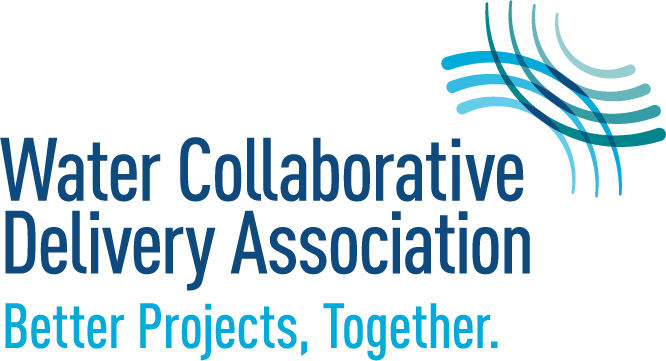Let’s be honest—when it comes to water and wastewater capital projects, everyone involved—owners, consultants, contractors, and suppliers—want the same thing: Stay on schedule, hit the budget, skip the drama. Cue the fanfare.
But getting there? That’s where things start to feel… well, a bit Wonderland-y.
So come with me through the looking glass to the owner’s side—a land where poor up-front planning can lead to bad project outcomes, breakdowns in trust on all levels, higher rates for our community members, and, metaphorically speaking, an “off with your head” moment for an owner.
The Requirements
For public utility owners, the journey begins with the all-powerful National Pollutant Discharge Elimination System (NPDES) permit. This document is both contract and law. It declares: You shall make clean water, and you shall do it 24/7.
And, just to keep things interesting, it includes a mandatory provision requiring an asset management program. So, like Alice searching for a sensible cup of tea, owners hire an AE (architect-engineer) firm to map their entire world: every pipe, pump, motor, and dollar it takes to keep things running. That becomes the foundation for their next adventure: the Capital Improvement Plan (CIP).
The Cut-and-Paste CIP
When developing an overall CIP, owners rely heavily on their AE firm for essential inputs like opinions of probable construction costs (OPCCs) and project cash flows. These estimates vary in maturity and accuracy. Most owners build their budgets using the high end of a Class 5 estimate (often +50% to +100%)—defensible to the public and governance bodies.
But let’s be real.
What often happens is that an engineer—new to the job or project planning or maybe just unfamiliar with the owner’s facilities—gets handed access to the AE’s proprietary cost-estimating software. They proceed to copy and paste estimates pulled from other utilities, resulting in a jabberwocky of an OPCC that’s neither accurate nor applicable. And often, there’s no contractor involved to vet the estimates—because if there were, AE estimates for owners wouldn’t keep coming in so far below actual bids.
Then that document lands in the owner’s inbox, and they start redlining like the Queen of Hearts with a bad attitude. They ask, “Why do these numbers look so wrong?” Did they do proper take-offs? Do they understand the urban constraints, the work-hour restrictions, the site-specific conditions?”
Unless the AE team sits down with the owner, listens, understands the constraints, factors in real market dynamics, and, most importantly, understands the risks contractors are pricing into their bids, the OPCC ends up about as useful as a flamingo in a croquet match.
Spin the Wheel—It’s Update Time
Once owners clean up the initial OPCC, they tack on soft costs—usually with input from the AE or based on the owner’s past experiences. These inform the capital budgets that drive 1-, 3-, and 10-year spending plans. These plans must then pass through the utility’s governance process—municipal council, authority board, or other oversight group.
Assuming approval (with minimal drama, we hope!), the plan moves forward. But here’s the kicker: Project budgets go stale fast—faster than tea at the Mad Hatter’s table. So each year the staff must update the spending plan.
Guess who gets the call to help with that update? Yep—the AE firm.
And guess what often happens? Often, the path of least resistance is taken, applying a blanket inflation rate based on a vague economic indicator or first-year finance class memory. Rarely is there a deep-dive constructability review or a reality check on market trends or even an ask of a financial/rate consultant to properly validate or adjust the numbers.
Meanwhile, regulators keep chasing the White Rabbit—always in motion, never quite on time, and usually leading owners somewhere unexpected. Suddenly, new rules, shifting permits, or revised quality targets appear without warning. The owner is forced to jam one or more new projects into their “approved” plan, fast. So the owner goes back to their AE who scrambles to guess at cost impacts—based on whatever they know (or don’t) about the site, their client, and the latest regulatory rabbit hole.
It’s Public—All the Time
Here’s a reality: The minute any draft OPCC, budget estimate, or plan hits the owner’s inbox, it becomes a public document. Sunshine laws require it be shared with anyone who asks—ratepayers, board members, elected officials.
If there are errors, omissions, or bad assumptions, everyone sees them. And even when owners and AEs try to correct flawed estimates, that takes time, costs more, and creates frustration—leading to breakdowns in trust between owners and consultants.
And then comes the inevitable question: “Why didn’t the owner just say how much money they had?”
Because, friends, the money an owner has is that budget number—the one that came from the AE.
Public owners don’t have slush funds stashed in the Mad Hatter’s sugar bowl. They don’t generate profit. Every dollar to be spent is planned, allocated, and made public. Sometimes painfully so.
Back Through the Looking Glass
If the WCDA education programs have taught us anything, it’s that success begins earlier than most people think. A strong, honest, well-informed 10-year Capital Improvement Plan is gold. But owners can’t build one alone. Most don’t have in-house resources nor the time to develop detailed project budgets.
That responsibility falls on the AE’s side of the looking glass.
So the next time someone asks, “What’s the real budget?” or “Why didn’t the owner just say how much they had?” —pause.
Because that budget—the amount the owner needs—was defined when the AE produced the first OPCC. The numbers in the CIP are the owner’s budget—those are the numbers an owner targets for rate increases and bond issuances. Those numbers are public and available to anyone who asks to comply with sunshine laws.
Owners don’t keep cash hidden away. Public utilities don’t turn a profit. Every dime is planned, allocated, and scrutinized. That’s the commitment owners make to their customers and governing bodies: to deliver safe, reliable water services at an affordable cost.
So maybe the better question project stakeholders should ask is: “What can we do—together—to build better, more accurate project estimates at the start of the planning process, before the clock starts ticking?”
Because when that happens, we all get out of Wonderland—with our heads intact.

